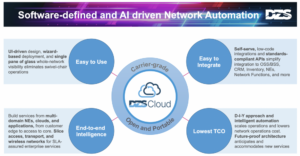Converging trends like remote work/school video conferencing, telemedicine, the metaverse, the rise of 5G and stimulus programs to bridge the digital divide are accelerating hyper-fast broadband growth on a global scale.
As service providers transform their networks to address these emerging market needs, the question that begs to be asked is shouldn’t transformation go beyond just high-speed infrastructure?
The challenge to becoming an experience provider
Services that are the most straightforward to deploy and manage, such as residential high-speed internet, offer high volume but have lower revenue opportunities and don’t provide much differentiation. Higher revenue “experience” services targeted towards enterprises or specific use cases, such as gaming or smart home connectivity and analytics, offer significant differentiation and customer retention potential but require more complex topologies running multiple applications. This makes them harder to deploy and manage.
Meanwhile, as users become increasingly dependent on the network, their expectations go well beyond just higher speeds. Reliable, consistent performance and prompt service delivery/restoration are equally important to reduce customer churn.
Meeting higher service levels and tapping into emerging service opportunities both call for holistic network operation management. An encompassing view of data, performance and trends leveraging AI-driven analytics across an end-to-end network is the foundation for closed loop automation—the ability to make network changes in seconds instead of hours or days to meet customer expectations and desired in home experiences.
Figure 1 illustrates this capability within the DZS Cloud product portfolio.

Figure 1: Software-defined and AI-driven network automation with DZS Cloud
“The right automation” is essential to scalable transformation
For service providers transforming their networks, now is the time to invest in automation to help orchestrate differentiating services that increase average revenue per user (ARPU) and drive an unparalleled customer experience.
What is “the right automation” that powers on-demand service delivery, while reducing costs and staffing requirements while scaling across diverse regions, network elements and devices?
Critical factors for network-wide automation include:
Ability for operators to create new services quickly with minimal reliance on the supplier(s) and minimal in-house staffing growth
Ability to deploy such services over the entire network of multi-vendor devices and systems (DZS, Adtran, Nokia, Calix, Huawei, etc.), through a stable northbound interface that is open and agnostic to vendor and service
Ability to easily integrate the automation solution with multi-vendor devices and support systems, such as network elements, OSS/BSS and health systems, again with minimal reliance on suppliers
By focusing on openness, vendor-neutral interoperability and freedom of choice, broadband automation empowers service providers to readily design and launch new services and manage them at a new level of end-to-end customer experience—not just devices.
Closing the design and deployment loop
When the automation system can manage device-level deployment details, rather than exposing them to OSS/BSS and other ecosystem components, you eliminate significant customization. This streamlines onboarding new regions and vendors to more quickly deliver targeted services.
But once a service is deployed, you need to monitor its performance network-wide, even into the premises, to ensure optimal experience. Collecting data from across the access network also lets you identify service impacting hotspots, identify new service prospects, and overall gain greater visibility and agility relative to network conditions.
From Service Provider to Experience Provider
The right type of automation empowers communication and broadband service providers to rapidly transform and manage their networks in an agile, customer experience-driven and highly efficient manner.
This is the monumental shift from service provider to experience provider that will differentiate operators in this latest phase of broadband evolution.
Next Steps
Innovation using open standards and cloud-native best practices, DZS Cloud lets operators manage multi-vendor networks through an intuitive single pane of glass, build custom services targeting new use cases and manage customer experience end-to-end.
To advance your transformation to the emerging experience provider, contact DZS.


